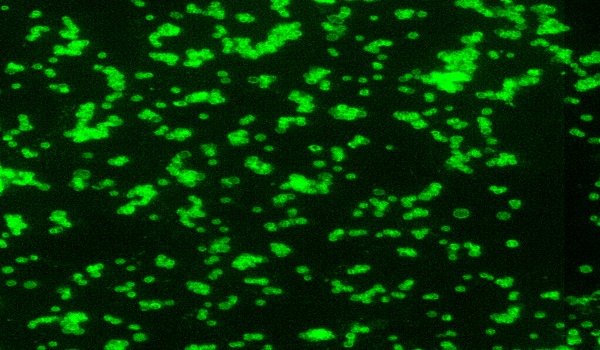| Description |
Aplha, transcription related growth factors and stimulating factors or repressing nuclear factors are complex subunits of proteins involved in cell differentiation. Complex subunit associated factors are involved in hybridoma growth, Eosinohils, eritroid proliferation and derived from promotor binding stimulating subunits on the DNA binding complex. NFKB 105 subunit for example is a polypetide gene enhancer of genes in B cells.A microtiter plate (spelled Microtiter is a registered trade name in the United States) or microplate or micro well plate or multiwell, is a flat plate with multiple "wells" used as small test tubes. The microplate has become a standard tool in analytical research and clinical diagnostic testing laboratories. A very common usage is in the enzyme-linked immunosorbent assay (ELISA), the basis of most modern medical diagnostic testing in humans and animals.
A microplate typically has 6, 24, 96, 384 or 1536 sample wells arranged in a 23 rectangular matrix. Some microplates have even been manufactured with 3456 or 9600 wells, and an "array tape" product has been developed that provides a continuous strip of microplates embossed on a flexible plastic tape.The activation of transcription factor subunits is the first step of gene expression, in which a particular segment of DNA is copied into RNA (mRNA) by the enzyme RNA polymerases. Transcription factors, unites and elongations can be RNA and DNA nucleic acids, base pairs of nucleotides . Converting from DNA to RNA is made by enzymatic reactions. During transcription, a DNA sequence is read by an RNA polymerase, which produces a complementary, anti-parallel RNA strand called a primary transcript. Transcriptions are key functions in signal transduction pathways. Signaling ligand binding transcription factors play an important role in transduction cascades. |
| Properties |
E05 478 566 350 170 or Enzyme-Linked Immunosorbent Assays,E05 478 566 350 170 or Enzyme-Linked Immunosorbent Assays,Human proteins, cDNA and human recombinants are used in human reactive ELISA kits and to produce anti-human mono and polyclonal antibodies. Modern humans (Homo sapiens, primarily ssp. Homo sapiens sapiens). Depending on the epitopes used human ELISA kits can be cross reactive to many other species. Mainly analyzed are human serum, plasma, urine, saliva, human cell culture supernatants and biological samples. |
| Warnings |
The Stop Solution is acidic. Do not allow to contact skin or eyes. Calibrators, controls and specimen samples should be assayed in duplicate. Once the procedure has been started, all steps should be completed without interruption. |
| Storage recommendation |
-20°C. Bring all reagents to room temperature before beginning test. The kit may be stored at 4°C for immediate use within two days upon arrival. Reseal any unused strips with desiccant pack. Minimize freeze/thaw cycles. |
| ELISA's cross-reactivity |
This assay doesn't seem to cross-react with other species. For more information about cross-reactivity please contact us. |
| ELISA's specificity |
To know the specificity of this test please feel free to contact us |
| Test |
ELISA Enzyme-linked immunosorbent assays Code 90320007 SNOMED |
| QC |
The kit is manufactured at ISO 9001 certified facilities. |
| Notes |
For research use only. Not for diagnostic procedures. |
| Assay principle |
Please see ELISA's datasheet, otherwise contact us |
| Protocol |
Please see ELISA's datasheet, otherwise contact us |
| Precision of the test |
Please see ELISA's datasheet, otherwise contact us |
| ELISA's stability |
Please see ELISA's datasheet, otherwise contact us |
| Samples to be analyzed |
serum, plasma, tissue homogenates, cell lysates |
| Gene name |
SRY (sex determining region Y) -box 5 |
| Research main area |
Epigenetics and Nuclear Signaling |
| Alternate protein number |
Please refer to SwissProt |
| Gene number |
Please refer to GenBank |
| Detection limits |
78 pg/ml-5000 pg/ml |
| Estimated production time |
7-11 business days |
| Alternate gene name |
L-SOX5, MGC35153, |
| Assay class |
Please contact us |
| ELISA detection |
Colorimetric |
| Sensitivity limit |
19,5 pg/ml |
| Assay duration |
1-5 hours |
| Shipping requirements |
Blue ice |
| Use for |
6 months |
| Protein number |
P35711 |
| Verified applications |
ELISA |
| Verified reactivity |
Human |
